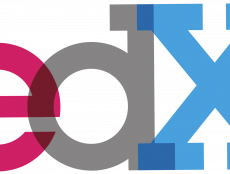
Articles
eLearning and Metrics Can Tackle Workplace Sexual Harassment
By Cait Etherington
February 24, 2017
Uber continues to make headlines. First, there was the controversy about the company’s CEO, Travis Kalanick, joining President Trump’s economic advisory council. Then, this past week, Uber was making headlines again—this time as the latest tech company in the Silicon Valley to come under attack for failing to address equity issues in the workplace. The sad thing is that a high-tech company like Uber should already know precisely how eLearning and metrics can tackle workplace sexual harassment. What this most recent incident reveals is that Uber is simply choosing to ignore data it could be using to solve its own workplace gender equity problems.
Uber Overlooked its Own Metrics
The allegations started with a blog post by former Uber engineer, Susan Fowler Rigetti. Fowler, who left Uber in early January for a job at another tech company, detailed her reasons for leaving. While there were many incidents that led to her departure, it started early on. As Fowler explains in her blog post, shortly after joining Uber, her manager sent “a string of messages over company chat . . . he was looking for women to have sex with.” Fowler immediately alerted HR. The problem is that HR did not respond as expected, and Fowler was ultimately forced to leave the team instead. Months later, she realized other women were also experiencing sexual harassment at Uber, and they too were being ignored by HR.
In the end, Fowler kept her head down, did great work and got out. So did most of the women she worked with. As Fowler observes in her blog post, when she joined Uber, it was comprised of about 25% women, but later dropped to 6%. By her last day, just 3% of the company’s engineers were women.
eLearning and Metrics Can Tackle Workplace Sexual Harassment with Tracking
 When CEO Travis Kalanick learned about Fowler’s allegations, he claimed to have no idea that his workplace culture was fostering and even condoning such behavior. Now, many people are wondering how he didn’t know. Uber is known for placing its drivers under surveillance around the globe. Indeed, Uber uses metrics to track their drivers and if the drivers’ ratings dip below an average of 4.6, the onus is on the driver to pay for additional training. In some cases, Uber uses training courses to determine whether or not drivers will even be let back on the platform. Given Uber’s culture or metrics and training, one has to ask: How is it possible that Uber can regulate the work of drivers around the world (especially since they do not consider their drivers to be employees) yet have no idea what employees are doing in their own headquarters? Also, given the company’s recognition of training as a response to substandard performance, why hasn’t training been used to address the company’s inherent problems?
When CEO Travis Kalanick learned about Fowler’s allegations, he claimed to have no idea that his workplace culture was fostering and even condoning such behavior. Now, many people are wondering how he didn’t know. Uber is known for placing its drivers under surveillance around the globe. Indeed, Uber uses metrics to track their drivers and if the drivers’ ratings dip below an average of 4.6, the onus is on the driver to pay for additional training. In some cases, Uber uses training courses to determine whether or not drivers will even be let back on the platform. Given Uber’s culture or metrics and training, one has to ask: How is it possible that Uber can regulate the work of drivers around the world (especially since they do not consider their drivers to be employees) yet have no idea what employees are doing in their own headquarters? Also, given the company’s recognition of training as a response to substandard performance, why hasn’t training been used to address the company’s inherent problems?
eLearning as a Response to Workplace Sexual Harassment
eLearning may not be a cure-all response to workplace sexual harassment and inequity, but it is part of the solution. In the past, attempts to address sexual harassment and gender discrimination in the workplace relied on face-to-face workshops. At a company with 7,000 employees spread across multiple locations, rolling out such training could take over a year and even then, many employees would simply not show up. With eLearning, training can be rolled out anywhere and anytime. Most importantly, it is possible to track who has completed required training modules and to follow up with non-compliant employees. Employees with ongoing troubling behavior can also be singled out and required to complete additional online modules while other employees can use their time to focus on other types of training or simply on their work. Finally, with eLearning there is no need to use valuable work time to address problem workplace behaviors. Anti-discrimination training can take place on employee’s own time.
Using Metrics to Tackle Workplace Sexual Harassment
 In addition to adopting eLearning as a way to quickly scale up one’s anti-discrimination training, metrics can be used to identify and respond to gender discrimination in the workplace. For example, InHerSight permits women to rate their companies on 14 key factors. It is somewhat like a Glassdoor for measuring gender issues in the workplace. However, there is a strong sense that any real social transformation will ultimately rest on training and awareness too. HR leaders, for example, need to continue learning how to use metrics to better understand what is going on in their workplaces and to respond before problems spiral out of control. If there is one thing we can all learn from Uber’s most recent misstep, however, it is that even companies with a tremendous capacity to leverage metrics and online training have yet to fully realize the potential data holds to address workplace inequities.
In addition to adopting eLearning as a way to quickly scale up one’s anti-discrimination training, metrics can be used to identify and respond to gender discrimination in the workplace. For example, InHerSight permits women to rate their companies on 14 key factors. It is somewhat like a Glassdoor for measuring gender issues in the workplace. However, there is a strong sense that any real social transformation will ultimately rest on training and awareness too. HR leaders, for example, need to continue learning how to use metrics to better understand what is going on in their workplaces and to respond before problems spiral out of control. If there is one thing we can all learn from Uber’s most recent misstep, however, it is that even companies with a tremendous capacity to leverage metrics and online training have yet to fully realize the potential data holds to address workplace inequities.









One Comment